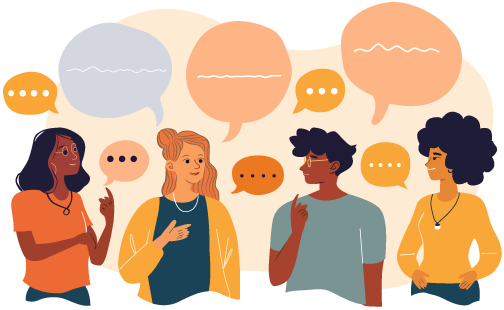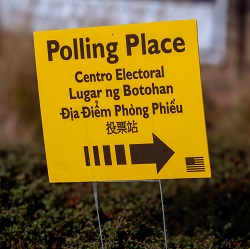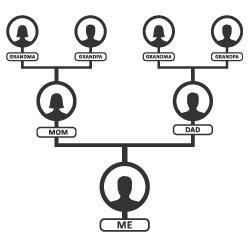How to Teach Language and Society: 5 Practical Classroom Ideas

Language is by its nature social. We use it to communicate and express ourselves, varying our use of language based on context and audience. Language is an important symbol of our identity as individuals and as groups. Some of us might be proud to project that identity publicly, while others of us may feel uncomfortable with how people form perceptions about us based on our language use and linguistic heritage.
Language is also a means of understanding society and culture, considering connections both within and across groups. In language classrooms, it is often studied for its structural properties and as a means of communication. Language classrooms do not typically study language and its connection to society. But why not? I’d like to suggest that encouraging students to explore language in its social context is a useful way of building multilingual awareness and celebrating diversity. Following are five ways to get started.
1. Survey Language Use and Attitudes
We vary in our use of language for a range of reasons, including who we are speaking with, the purpose of the interaction, our emotions at the time, and the topic of conversation. Exploring people’s language use patterns and how they feel about languages can be very useful to make predictions about the future of the linguistic vitality of a community.
Have your students prepare questionnaires on language use and linguistic attitudes. This could include questions about people’s language practices and behaviour, such as
-
- What language(s) do you speak at home?
- What language(s) do you prefer to read in?
- What language(s) do you most want to learn?
It could also include questions that ask about people’s beliefs about language, such as
-
- Which language(s) spoken in your community/neighbourhood do you think has the most prestige?
- Which language(s) spoken in your community/neighbourhood do you think have the most cultural or linguistic richness?
- Which language(s) do you think are most important to secure a good job?
Once students prepare questionnaires, they can conduct a survey in their neighbourhood and present their findings to the class.
 2. Analyse the Linguistic Landscape
2. Analyse the Linguistic Landscape
We can understand a lot about a location from the visible language present there. The presence or absence of a language in the visual landscape of a community can be very telling about the language hierarchies in that space. Have students select an area in their neighbourhood or around the school. They will need to photograph every visual display of language in that location, including graffiti, billboards, road signs, advertisements, street names, commercial shop signs, and so on. Students can then analyse their photographic data by observing patterns in it:
-
- What languages/scripts are included/dominant?
- Does the visual language in the public space show linguistic hierarchies?
- Are some languages used in the society missing from the linguistic landscape?
This can form the basis of a discussion around what it might be like for people from different language backgrounds to live in that neighbourhood.
3. Study Multilingual Practices in Pop Culture
The connection between language and society can be explored through popular entertainment. Select a TV show or movie where characters speak more than one language. Movies like Crazy Rich Asians, Coda, and Life of Pi include characters that use multiple languages. As students watch the movie, they can make a record of who speaks what language to whom and in what context. How did language choice affect the character’s emotional state? Did characters use language as a tool to intentionally include or exclude others? This can be the basis of a broader discussion on language choice and its relationships with emotions.
4. Compare Interpersonal Relationships
 Languages vary in many ways. One of the most interesting variations has to do with how we describe kinship terms. Draw a (real or fictional) family tree with names and kinship terms (e.g., mother, father, uncle, sibling). Ask multilingual students in the class to state the kinship terms in their languages. Are they similar or different? Does the language make a distinction by generation, gender, line of descent, blood/marriage, and so on? Were there any surprises in this comparison?
Languages vary in many ways. One of the most interesting variations has to do with how we describe kinship terms. Draw a (real or fictional) family tree with names and kinship terms (e.g., mother, father, uncle, sibling). Ask multilingual students in the class to state the kinship terms in their languages. Are they similar or different? Does the language make a distinction by generation, gender, line of descent, blood/marriage, and so on? Were there any surprises in this comparison?
5. Explore Loan Words
Languages borrow words from other languages all the time, and English is no exception. When one language “borrows” a word from another, the word is known as a loanword. Explain the concept of loanwords. Provide a list of loanwords in English (e.g., shampoo, café, chai, guru, bazaar, zero, rucksack, democracy, atoll, piano). Ensure that students understand the meanings of the words and how to say them. Ask where the words originated, and what the original word meant. Depending on the language and age levels of the students, they can guess this, or search for the information.
Language is far more than a means of communication—it’s a reflection of identity, culture, and society. By incorporating activities that explore the social aspects of language, educators can foster multilingual awareness, celebrate diversity, and deepen their learners’ understanding of the world around them.

